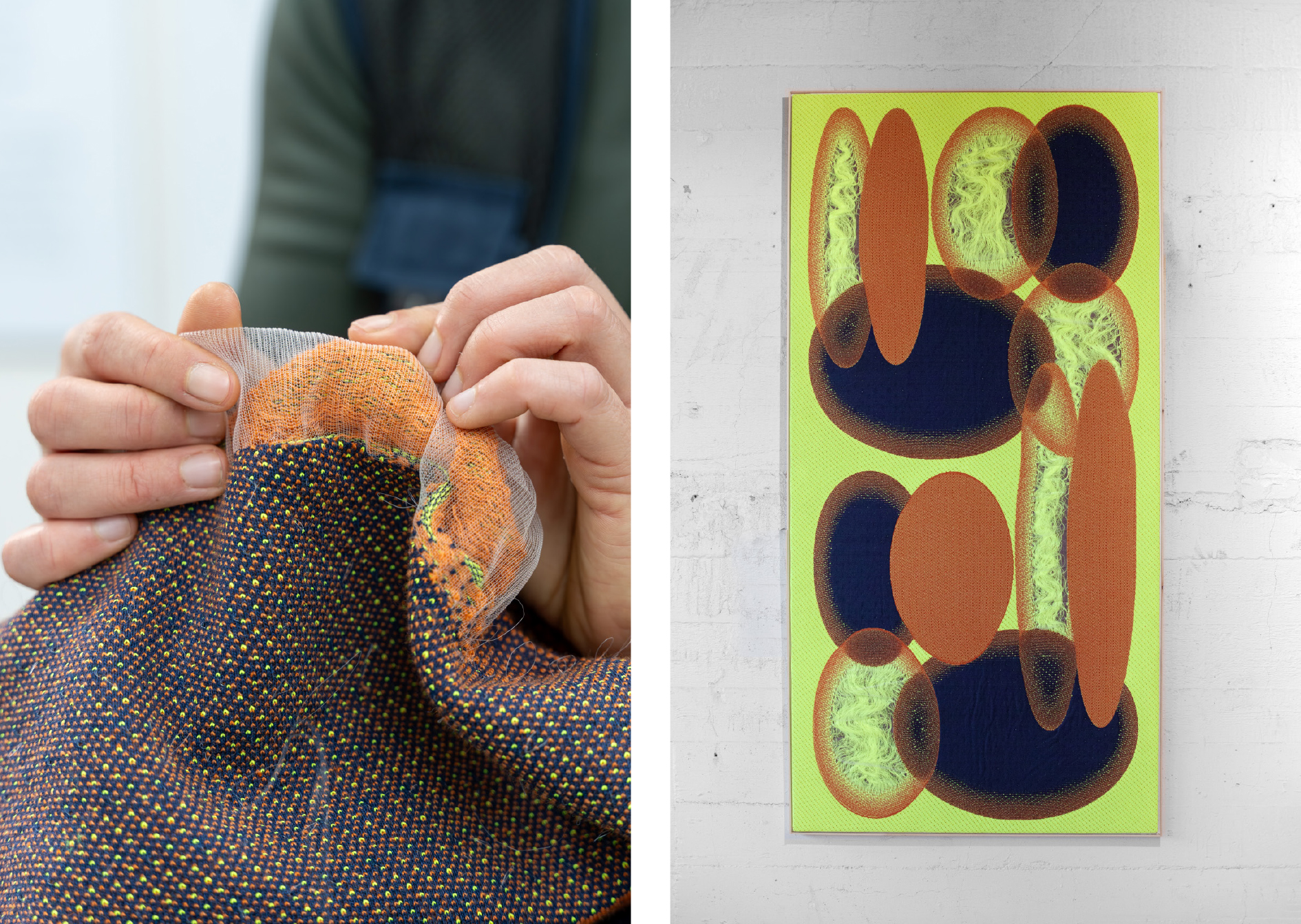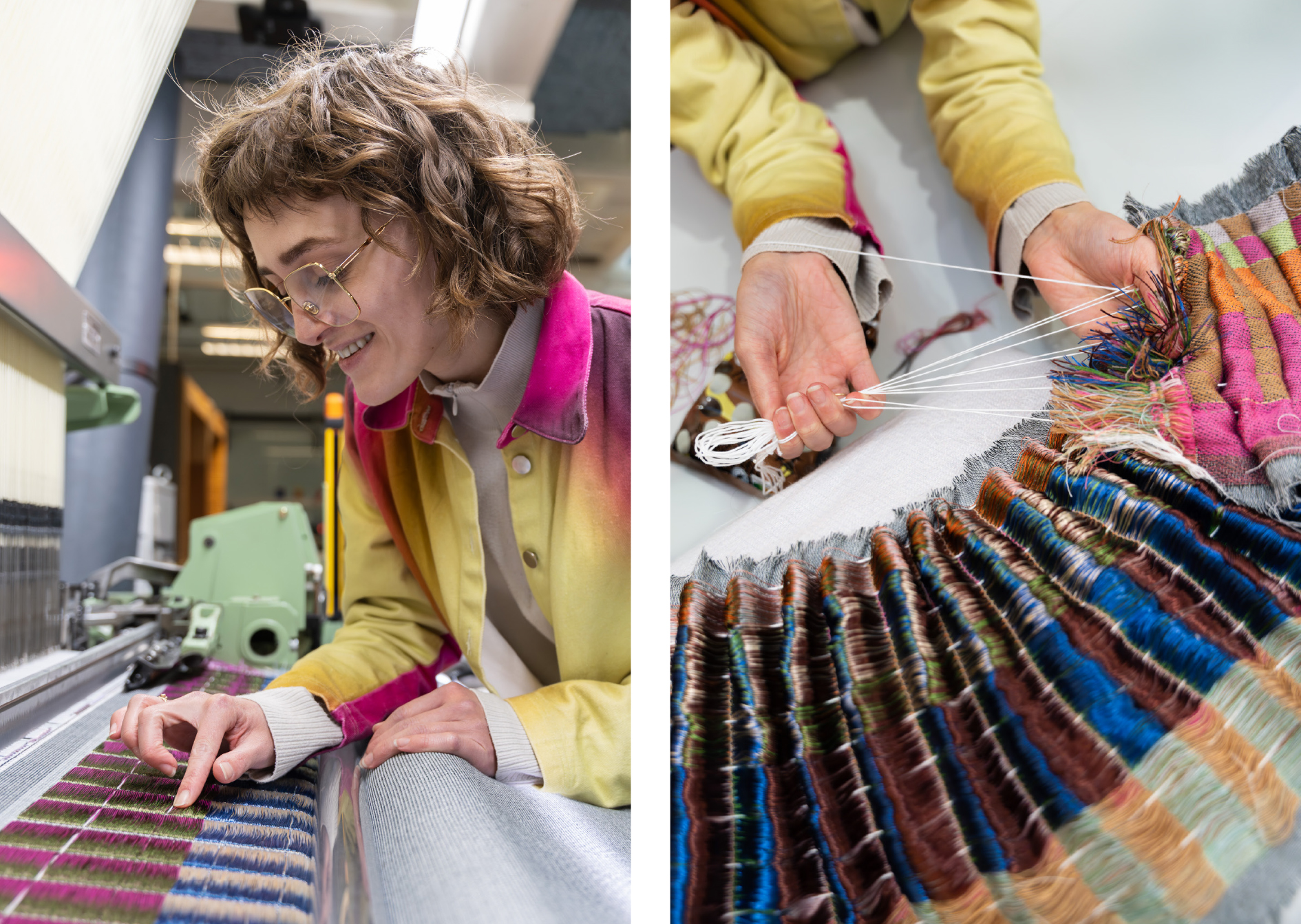From 30 March, A Matter of Life will showcase the work of participants from the Advanced Textile Program 2023 (ATP 2023). The exhibition highlights the development of young talent and is a must-see for anyone interested in joining the ATP 2024: registration opens on the same day.
During the online final presentation in December, the energy generated by the ATP 2023 quickly became clear. A huge amount was created in the TextielLab over two weeks under the inspiring guidance of Otobong Nkanga, Nina Lolle and all the product developers. From 30 March, A Matter of Life will showcase a selection of that work in the TextielMuseum’s viewing gallery. Project leader Michelle Baggerman asked each of the eight participants to provide several meaningful pieces from their ATP experience for the exhibition: their top three personal works and their top five works created with or by others. These range from sketches and samples to more developed pieces. That’s because most participants continued to work on their projects after leaving the TextielLab. “They took home everything they made here last year and had time to reflect on it. The pieces that are now coming back to us for the exhibition give a great insight into their development process,” says Baggerman.
Relay race
Like a relay race, where the baton is passed from one person to the next, the exhibition illustrates where the eight designers’ processes interact. This exemplifies the ATP’s focus on collaboration, experimentation and the value of an inspiring and supportive network. The international participants, all from very different backgrounds, not only learned about each other’s working methods but also engaged with artists, researchers, innovators and companies in the textile industry. This new network is already paying off in several ways. For instance, shortly after the ATP, Kvadrat invited Dominika Gacka, Nicky Vollebregt and Andia Coral Newton to give a presentation about the work they made during the ATP. And Amy Lewis has exhibited her ‘Dreamscape’ series, created during the ATP, at OBJECT Rotterdam. Her layered works were made on the circular knitting machine from an innovative combination of monofilament, cotton and polyester. The transparent top layer reveals the secrets of the underlying structures. Monofilament had never been used on the lab’s new circular knitting machine before, which gave Lewis the opportunity to experiment with product developers Yani Chuang and Mathilde Vandenbussche. “I actually thought beforehand that I would mainly do weaving as I had never worked on an industrial circular knitting machine before,” Lewis says. “But now I’d like to experiment more with this technique and show what’s happening deep beneath the surface of the knitting.”

Amy Lewis’ ‘Dreamscape-Fluro’ being developed in the TextielLab, and the result at OBJECT Rotterdam. Photo left: Patty van den Elshout, photo right: Felix Baumsteiger
“I want to show what’s happening deep beneath the surface of the knitting”
Amy Lewis, ATP 2023 participant
Drawstrings
Nicky Vollebregt, the only Dutch participant, also got a lot out of the intensive collaboration, she says. As a ‘traditional weaver’, she was not used to articulating her ideas about form and structure. “I usually work independently, and the material takes shape organically on my loom. In the lab, I had to explain clearly to the product developer what I wanted. This process prompted reflection and inspiring interactions, which led to the creation of surprising textures and structures in a very short time.” She also benefitted from seeing how the other participants work. While she tends to dive straight into quick experiments on the machine, she noticed that others took the time to study the machine extensively before making anything. “As a result, their initial samples were often more developed than mine. I definitely want to incorporate these different ways of making into future projects.” The samples that will soon be shown in the ATP exhibition explore the tension between manual and machine production. Her pop-up textiles can be manually transformed into 3D shapes using ‘drawstrings’ woven into the fabric. She plans to further develop these shapes into a series of textile sculptures, which she hopes to present later this year.

Nicky Vollebregt developing her pop-up textiles. Photos: Patty van den Elshout
Double opening
From now on, the ATP exhibition will be a fixture in the annual programming of the TextielMuseum’s viewing gallery, which is located on the third floor of the glass building. Works by fourth-year students from the Design Academy Eindhoven are currently on display here until 24 March. After this date, the large wooden cubes in the space will be given a new look. A film will be shown inside the cubes in which all the candidates discuss the programme and the creative process. The film conveys the ‘boost’ that early career designers experience when they get the opportunity to experiment freely on the lab’s industrial machines.
The exhibition opening on 30 March will coincide with registration for the next ATP in the autumn. Two additional places have been added this year, bringing the total number of participants to ten. While this won’t make the selection process any easier, there is good news for anyone interested. Plans are underway to make the online programme, featuring presentations by Otobong Nkanga, Brian Anderson, Borre Akkersdijk, Stine Find Oster and others, accessible to a larger audience this time around.
Film by Thijs van Gasteren about the ATP 2023
Text: Willemijn de Jonge